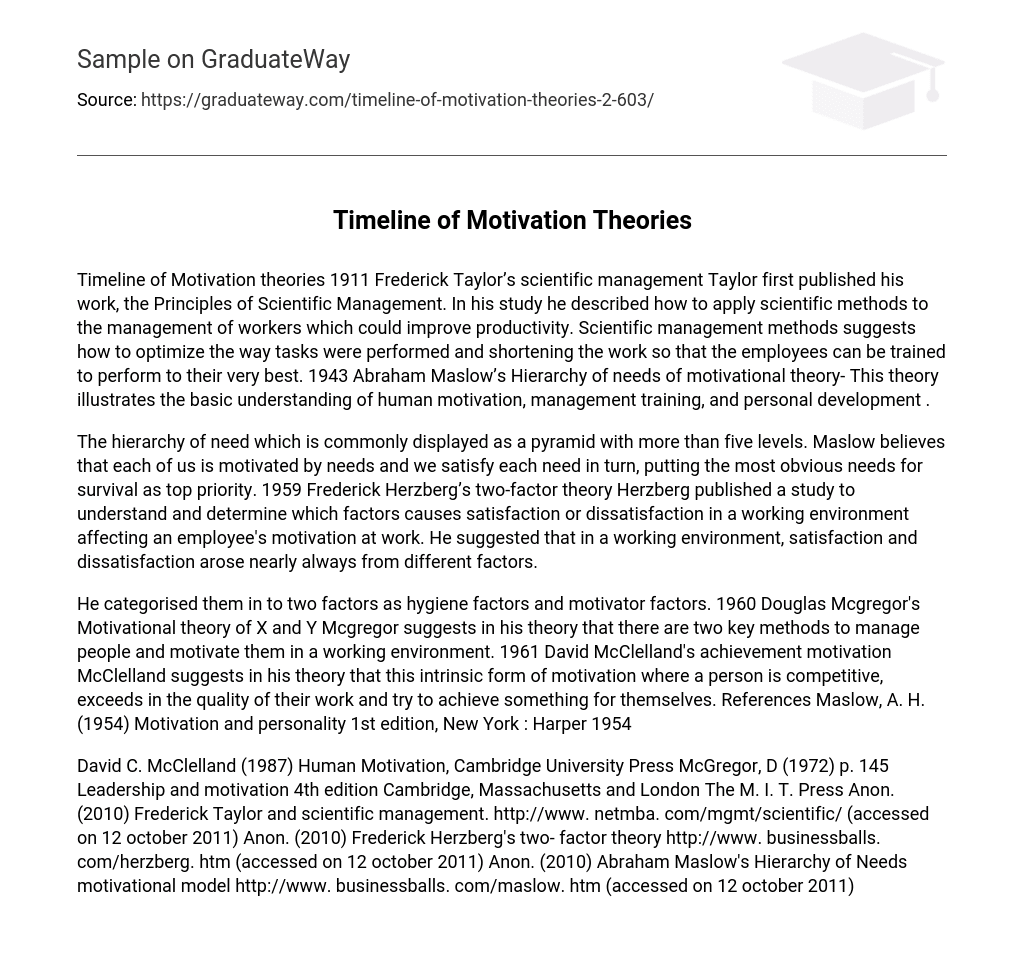1911 Frederick Taylor’s scientific management Taylor first published his work, the Principles of Scientific Management. In his study he described how to apply scientific methods to the management of workers which could improve productivity. Scientific management methods suggests how to optimize the way tasks were performed and shortening the work so that the employees can be trained to perform to their very best.
1943 Abraham Maslow’s Hierarchy of needs of motivational theory. This theory illustrates the basic understanding of human motivation, management training, and personal development . The hierarchy of need which is commonly displayed as a pyramid with more than five levels. Maslow believes that each of us is motivated by needs and we satisfy each need in turn, putting the most obvious needs for survival as top priority.
1959 Frederick Herzberg’s two-factor theory. Herzberg published a study to understand and determine which factors causes satisfaction or dissatisfaction in a working environment affecting an employee’s motivation at work. He suggested that in a working environment, satisfaction and dissatisfaction arose nearly always from different factors. He categorised them in to two factors as hygiene factors and motivator factors.
1960 Douglas Mcgregor’s Motivational theory of X and Y Mcgregor suggests in his theory that there are two key methods to manage people and motivate them in a working environment.
1961 David McClelland’s achievement motivation. McClelland suggests in his theory that this intrinsic form of motivation where a person is competitive, exceeds in the quality of their work and try to achieve something for themselves.





